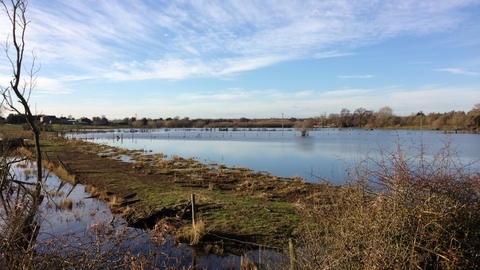UPDATE: Work at Sinkers Fields has finished for the season and the bird hide is open again. See below for information about visiting Charles Sinker Fields and accessing the hide.
When visiting the hide, please park at the NNR car park at Morris Bridge. A small car park with 2 spaces next to the hide is available for blue badge holders only. Please avoid parking in areas where local access is impacted such as along Moss Lane.
Cathie Sleigh

Charles Sinker Fields
Location
Know before you go
Dogs
When to visit
Opening times
All year round.Best time to visit
Any timeAbout the reserve
Charles Sinker
Charles Sinker was a founder member of Shropshire Wildlife Trust in 1962. Professionally, he was the first warden of Preston Montford Field Centre and the Field Studies Council first national director.
In 1962 he published a paper highlighting the extraordinary ecology of the Meres & Mosses, which has formed the backbone of efforts to conserve them ever since.
The fields
The fields lie below the Whitchurch Branch of the Llangollen Canal, right on the edge of Fenn's, Whixall and Bettisfield Mosses National Nature Reserves, which cover over 2500 acres. The Mosses were drained for decades to allow for peat to be extracted commercially and one of the main drains ran across these peatland-edge fields. The original drains became insufficient as annual rainfall increased in recent years, so excess water collected on the fields, soon creating a haven for wetland bird species. However, during dry summers, the fields soon dry out and the wetland habitat disappears, along with the myriad of wetland wildlife.
The site has been given a makeover, thanks to funding through the BogLIFE Project. To ensure that the majority of the fields remain wet for the whole year, bunds have been created to hold water on the site, rather than allowing it to drain off onto surrounding low-lying land.
The bird hide offers clear views over an area of open water, where birds such as teal, lapwing and curlew can be seen. The remaining ditches are home to water voles and areas of sedge and rushes provide ideal habitat for other small mammals, such as wood mice, field voles and harvest mice,
The hide is open all year-round to everyone, but anyone planning to visit need to complete a short online application to obtain the code. Occasionally, school groups will also visit the hide, during which times, we ask other visitors to the hide to be respectful.
Habitat
Contact us
Location map
Become a member and support our work
The vital work we do for nature depends on the support of people who care about the future of Shropshire's wildlife and wild places.




